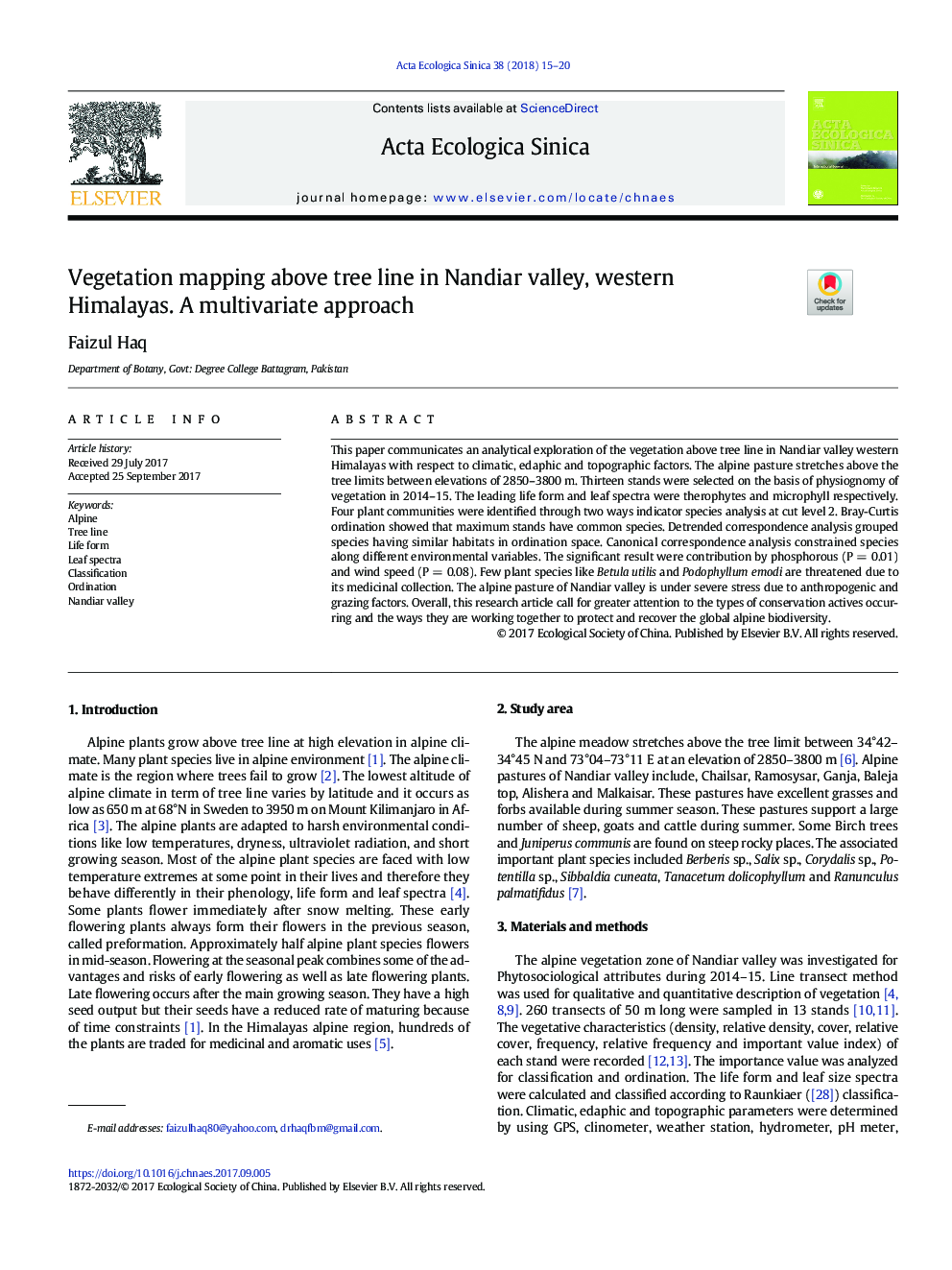| Article ID | Journal | Published Year | Pages | File Type |
|---|---|---|---|---|
| 8846328 | Acta Ecologica Sinica | 2018 | 6 Pages |
Abstract
This paper communicates an analytical exploration of the vegetation above tree line in Nandiar valley western Himalayas with respect to climatic, edaphic and topographic factors. The alpine pasture stretches above the tree limits between elevations of 2850-3800Â m. Thirteen stands were selected on the basis of physiognomy of vegetation in 2014-15. The leading life form and leaf spectra were therophytes and microphyll respectively. Four plant communities were identified through two ways indicator species analysis at cut level 2. Bray-Curtis ordination showed that maximum stands have common species. Detrended correspondence analysis grouped species having similar habitats in ordination space. Canonical correspondence analysis constrained species along different environmental variables. The significant result were contribution by phosphorous (PÂ =Â 0.01) and wind speed (PÂ =Â 0.08). Few plant species like Betula utilis and Podophyllum emodi are threatened due to its medicinal collection. The alpine pasture of Nandiar valley is under severe stress due to anthropogenic and grazing factors. Overall, this research article call for greater attention to the types of conservation actives occurring and the ways they are working together to protect and recover the global alpine biodiversity.
Related Topics
Life Sciences
Agricultural and Biological Sciences
Ecology, Evolution, Behavior and Systematics
Authors
Faizul Haq,
